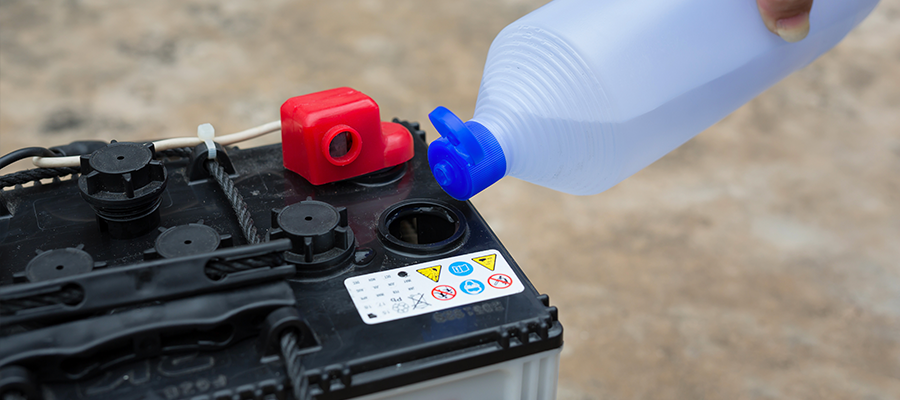
Watering Your Battery (Flooded batteries only)
Flooded batteries need water. More importantly, watering must be done at the right time and in the right amount or the battery’s performance and longevity suffers. Water should always be added after fully charging the battery. Before charging, there should be enough water to cover the plates. If the battery has been discharged (partially or fully), the water level should also be above the plates. Keeping the water at the correct level after a full charge will prevent having to worry about the water level at a different state of charge. Depending on the local climate, charging methods, application, etc., it is recommended that batteries be checked a minimum of once a month and/or once every seven discharge–charge cycles until you get a feel for how thirsty your batteries are. Important things to remember:
- Do not let the plates get exposed to air. This will damage (corrode) the plates.
- Do not fill the water level in the filling well to the cap. This will likely cause the battery to overflow with acid, consequently losing capacity and causing a corrosive mess.
- Do not use water with high mineral content. Use distilled or de-ionized water only.
CAUTION: The electrolyte is a solution of acid and water, so skin contact should be avoided.
Step-by-step watering procedure: (Flooded batteries only)
- Open the vent caps and look inside the fill wells.
- Check the electrolyte level; the minimum level is at the top of the plates.
- If necessary, add just enough water to cover the plates at this time.
- Put batteries on a complete charge before adding additional water (refer to the Charging section).
- Once charging is completed, open the vent caps and look inside the fill wells.
- Add water until the electrolyte level is 1/8" below the bottom of the fill wells.
- A piece of rubber can be used safely as a dipstick to help determine this level.
- Clean, replace, and tighten all vent caps.
WARNING: Never add acid to a battery.
